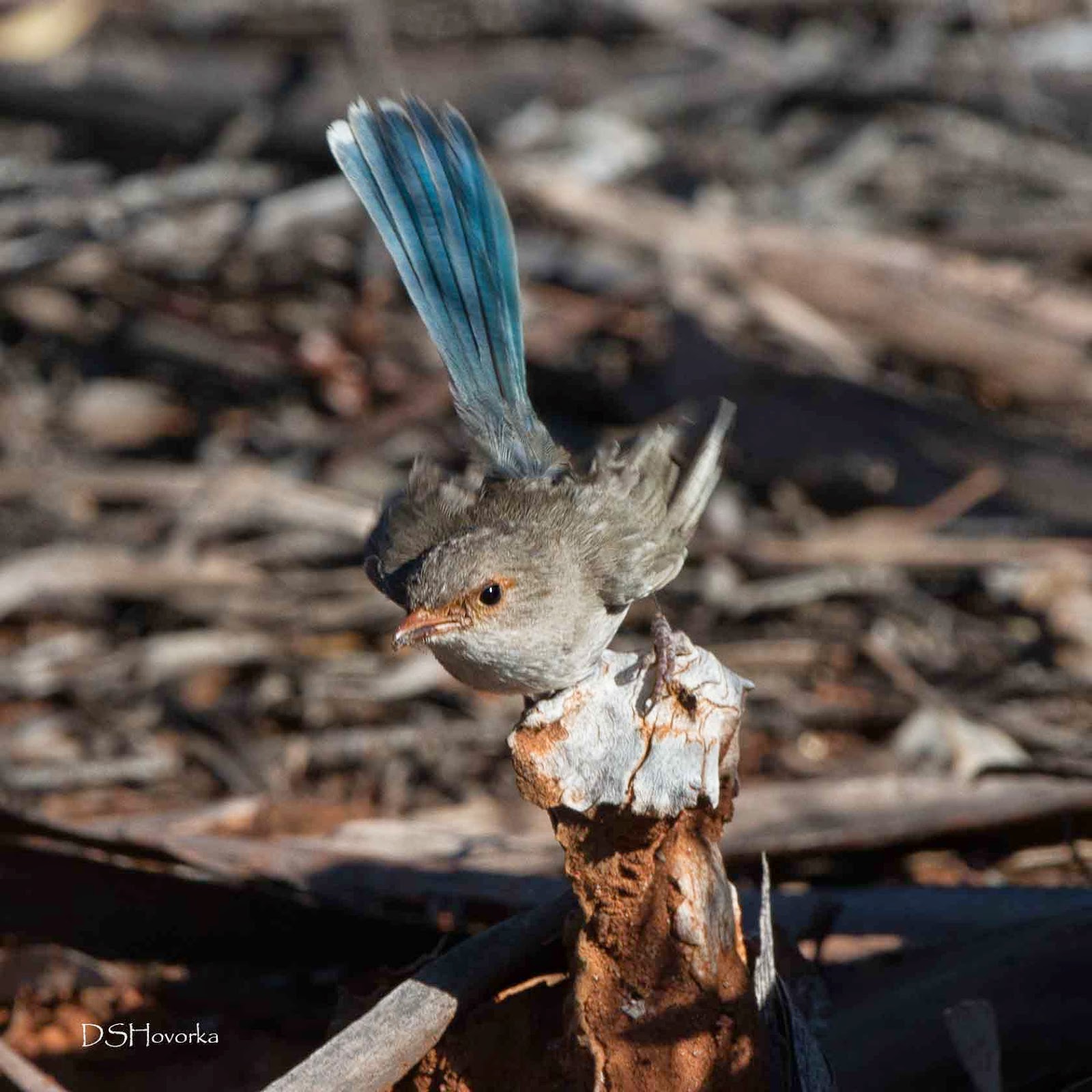 |
| Splendid Fairywren |
 |
| Splendid Fairywren (Female) |
The females were delightful, flitting about with their tails swishing to and fro.
 |
| Splendid Fairywren |
 |
| Variegated Faireywren |
We also had good views of beautifully plumaged Variegated Fairywrens
 |
| Variegated Fairywren |
 A wonderful find in some roadside saltbrush was a family of White-winged Fairywrens. With some patience I finally got a reasonably close view of one of the males - they are quite shy and keep their distance.
A wonderful find in some roadside saltbrush was a family of White-winged Fairywrens. With some patience I finally got a reasonably close view of one of the males - they are quite shy and keep their distance....and the Chestnut Rumped Thornbill. Fast, twitchy flyers and really really similar!
 |
| Brown Songlark |
Brown Songlark in full breeding plumage. What was striking was the size difference between the males and females (below)

 |
| Southern Scrub-robin |
We were happy to find a few scrub-robins who were happy to lead me on a merry chase out into the malee (always an issue when you can't see the car and can't see anything but endless dry trees. No landmarks at all!)
 |
| Red-capped Robin (female) |
The female Red-capped Robins were happy to pose - the males were about but far skitchiyer..
On returning to camp we were pleased to find a small flock of Southern Whitefaces around our tent. We have seen them (rarely) singly before but never in a flock.

Nancy also found this amazing Shingback - prehistoric! This is his threat-posture as Nancy crouched to take a picture (as I sensibly stood 10 feet away ready to rescue her!)
Unfortunately our choice of weekends could have been better. We didn't find any of the unusual species we had hoped for - it has been really dry in the region and we picked the hottest weekend on record (for November - 43.7 C (110 F)!
So we will return come cooler temps to search, once again, for the our desired list....










































